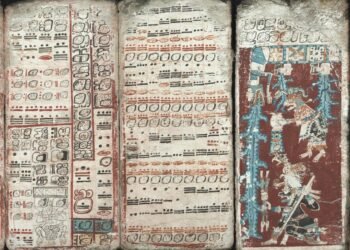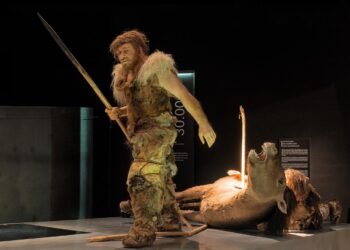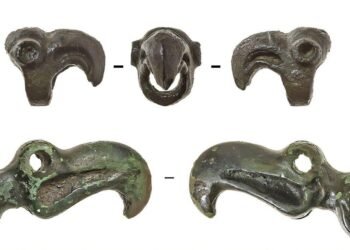An extraordinary archaeological discovery has been made at the Guangzhou Zoo in South China’s Guangdong Province, where a burial site containing 148 tombs has been unearthed, spanning a remarkable 2,100 years.
The tombs, which date from the Han Dynasty (206 BCE-CE 220) to the early years following the founding of the People’s Republic of China, were excavated between April and July 2024 by the Guangzhou Municipal Institute of Cultural Heritage and Archaeology.
The excavation, covering an area of about 1,300 square meters, revealed a diverse collection of tombs from several significant periods in Chinese history. The site includes four tombs from the Han Dynasty, eight from the Jin and Southern dynasties (265-589), 15 from the Tang Dynasty (618-907), and 121 from the Ming and Qing dynasties (1368-1911).
A total of 196 artifacts were recovered, including pottery, porcelain, bronze items, jade, and bead ornaments. Additionally, 48 gravestones from the Republic of China period (1912-1949) to the early years of the People’s Republic of China were found, offering a window into burial practices spanning over two millennia.
Among the most significant findings are two well-preserved tombs: one from the Eastern Jin Dynasty (317-420) and another from the Southern Dynasties (420-589). The Eastern Jin tomb, described by Cheng Hao, an official with the Guangzhou Municipal Institute of Cultural Heritage and Archaeology, as the largest and best-preserved tomb from that period discovered in Guangzhou, measures over 10 meters in length. Despite the presence of a looter’s hole near the entrance, the tomb’s chamber and walls remain largely intact.
The Southern Dynasties tomb, slightly smaller in size, was identified as a joint burial for a married couple. Although it, too, showed signs of looting with small holes at the top, the structure remains nearly intact. The discovery of these two tombs is considered by Cheng to be of great significance for the study of burial shapes, stages, and funeral customs during the Six Dynasties period (222-589) in Guangzhou. It also provides critical information for understanding the construction technology used during the Jin and Southern dynasties.
The arrangement of the tombs, particularly those from the Ming and Qing dynasties, follows a distinct pattern. The burial chambers are similar in scale and orientation, with a consistent spacing between them. This suggests that the area was a well-organized and planned cemetery, reflecting the advanced urban planning and societal organization of the time.
Guangzhou Zoo, located in one of the city’s key burial areas, has been the site of numerous archaeological discoveries over the years. Since 1956, when construction of the zoo began, the Guangzhou cultural relics department has excavated nearly 500 ancient tombs in more than 30 locations within the zoo. These ongoing discoveries have significantly contributed to the understanding of Guangzhou’s historical development and its cultural heritage.
In addition to the archaeological work, the Guangzhou Institute of Cultural Relics and Archaeology has partnered with the Guangzhou Zoo to engage the public through educational tours. These tours provide visitors with an opportunity to learn more about the significance of the archaeological findings and the rich history they uncover.






















